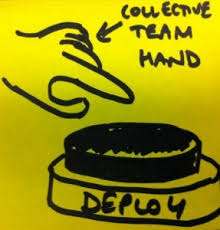Energy - A New Vertical Market for Drupal

During the Fall of 2014 Function1 teamed with the BACnet Group – Drupal, Acquia, and Commissioning & Green Building Solutions, Inc. (CxGBS®) to submit a response to the GSA RFI Green Proving Ground program. It required a “Title” so we called it “Open Energy - A New Paradigm for Energy Dashboards”. The GSA program leverages its real estate portfolio to evaluate innovative sustainable building technologies. Our objective was to promote the means to extract additional energy savings from real estate portfolios by simply integrating two very common ‘open’ technologies, BACnet and Drupal.
The GSA GPG program does not provide any funding for projects selected. Rather, it lets you implement your technology on their facilities for free, and if they like the way it works, the national labs will verify how well and the project owners can then boast about it.
The GSA portal already uses Drupal, they are already interested in Smart Buildings, and the use of BACnet in Government facilities (and even in the developing Smart Grid) is widespread and well documented. So at least to me, its a no-brainer to integrate them. And, it seems like the open data initiative almost mandates that they do.
I’m not convinced any of our team members were really hoping to win a competitive project that we could do for the government for free. But it was fun working with the team to figure out how we could implement it cost effectively, host it long term and document the savings.
The premise was essentially that of “smart phones”. These devices really are not ‘smart’. We just call them that as a convenience. What they really do is to make us, the people using them, smart. Or at least we can do a lot of smart things with our phones these days. Likewise, by injecting real-time building data into web sites, we can make “smart sites”. Dynamic sites packed with lots of information. The real-time data is there to pursue if the user chooses. Most of the time, a lot of the information won’t be accessed. But, when it is, the user becomes smarter about the places in which they work, live and play. And, the smarter user can help save building operators a lot of money. (ie: It might actually be better to take off your sweater than to open the window when you get hot. Or, put your sweater on if your too cold.)
So the following FAQ, is our submission to the GSA – GPG program. And, I think it help’s to explain much of our justification for trying to market “Drupal as an Energy Conservation Measure”.
1 What is the Technology Category?
2 What is a short, descriptive and informative title for your technology.?
4 How does your technology work?
5 How does it compare to like technologies currently in use?
6 What is the value proposition of this technology?
7 What are the technical risks of using this technology?
8 What is the current state of this technology's commercialization?
9 How will this technology reach broad-based adoption?
10 What are the major barriers to widespread deployment of your technology?
12 Is there information on real-world deploymnet or test cases?
13 What is the projected simple payback period ?
14 What are the details and scenario associated with the Projected Simple Payback Period calculation?
15 What is required to achieve the benefits of your technology cost effectively?
16 What is the ideal "proof-of-concept" project to get started?
- Log in to post comments

